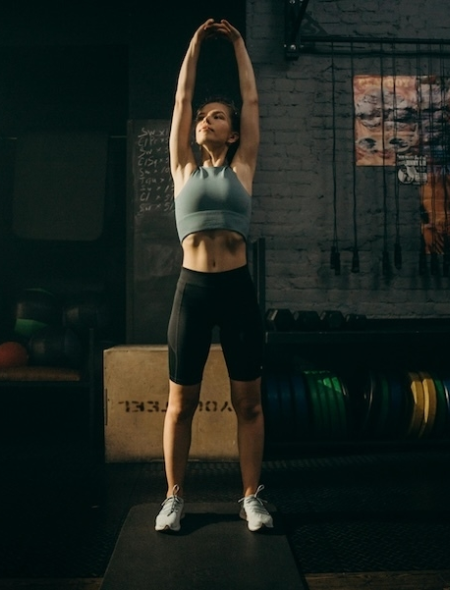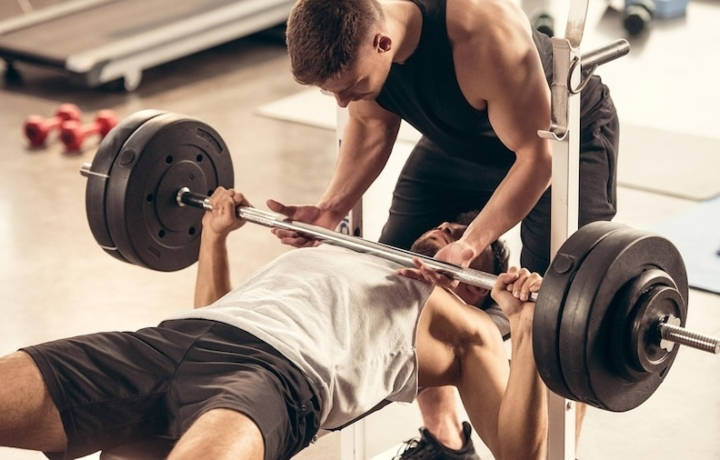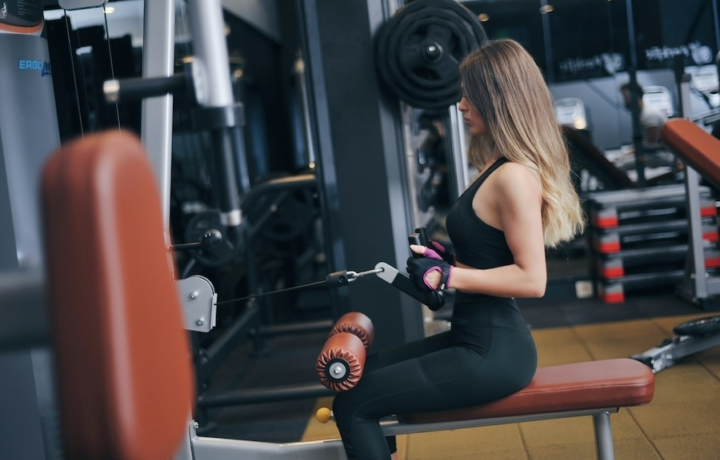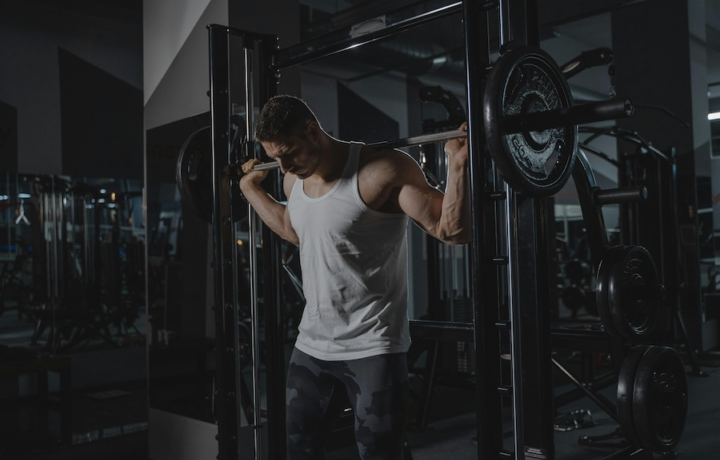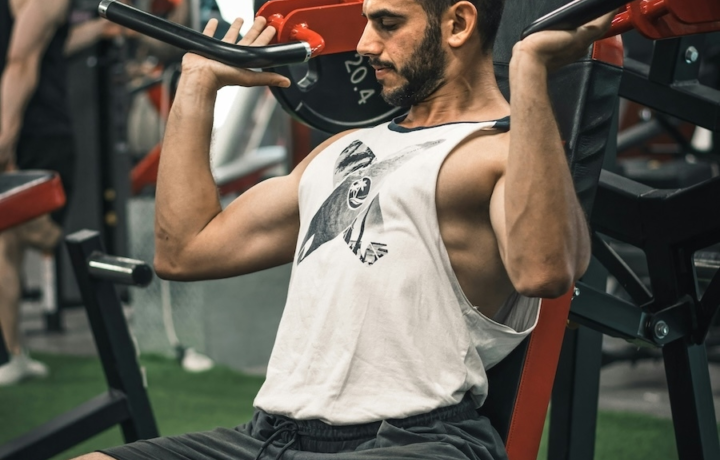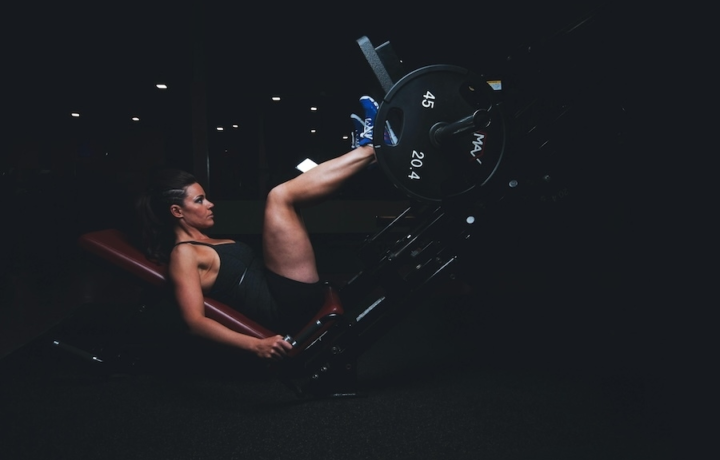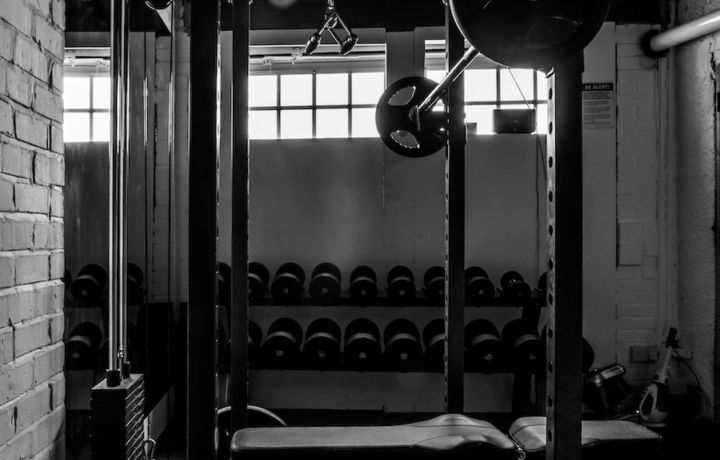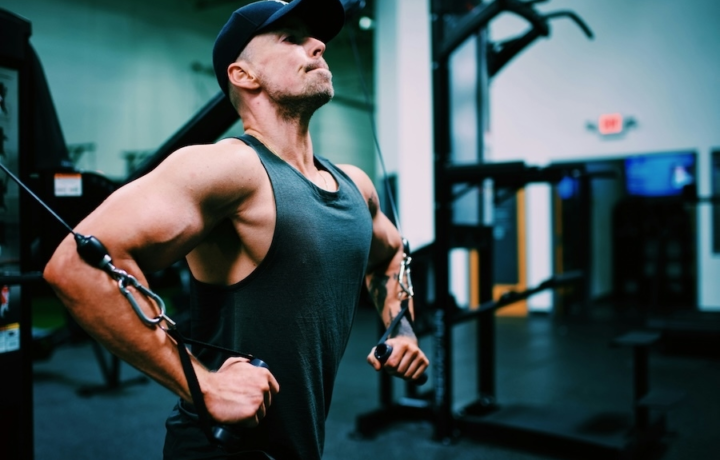The complete guide to best abs & core workouts
Your core is the powerhouse of your body. It's not just about looking good at the beach or fitting into your favorite jeans, although those are nice perks. A strong core impacts everything you do, from picking up groceries to crushing your personal records at the gym. Yet despite its importance, the core remains one of the most misunderstood muscle groups in fitness.
Many people still think endless crunches will magically reveal a six-pack, while others avoid direct ab work altogether, believing compound movements are enough. The truth lies somewhere in between. Your core consists of multiple muscle groups working together. Each deserves attention through targeted exercises.
This comprehensive guide will walk you through everything you need to know about abs and core workouts. We'll explore the most effective exercises, how to structure your training split, optimal weekly volume, and whether those ab exercises actually help with fat loss. You'll discover the best movements for home or gym settings, learn proper technique to maximize results while preventing injury, and get answers to the most common questions about core training. Whether you're a beginner just starting your fitness journey or an experienced lifter looking to strengthen a weak link, this guide will help you build a stronger, more functional midsection.
Direct to
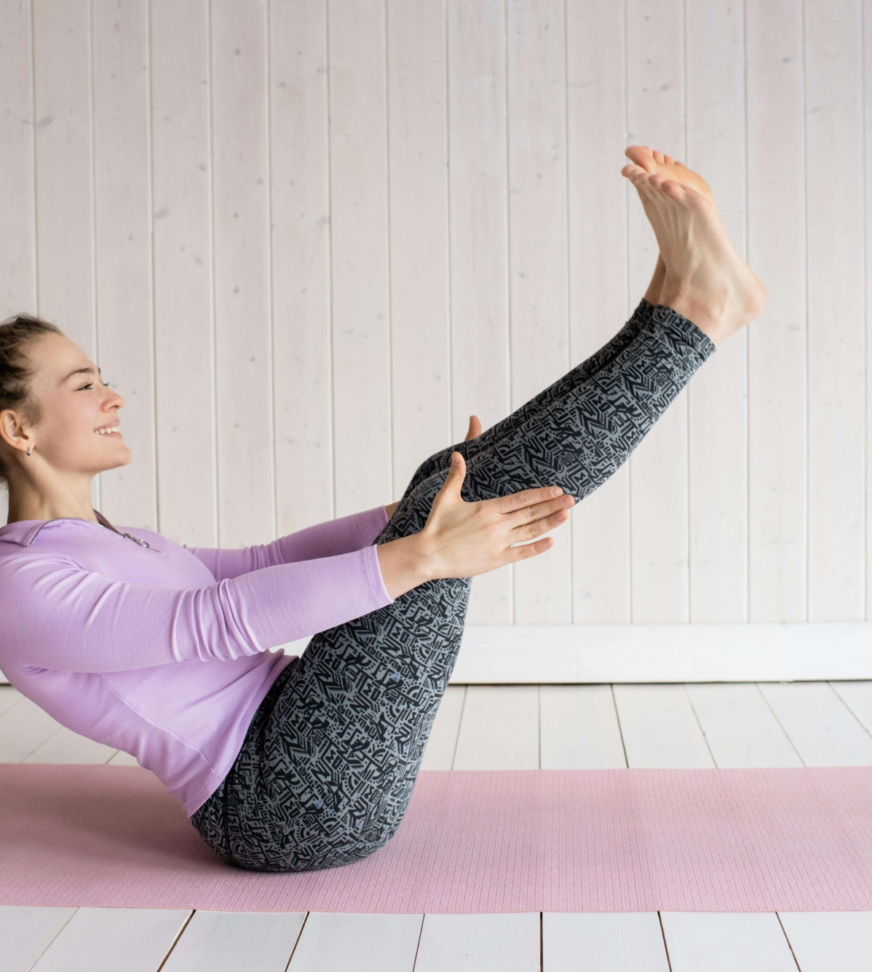
What are the best Abs & Core workouts?
The best abs and core workouts target all the muscles in your midsection through multiple planes of motion. Your core isn't a single muscle, so effective training requires variety. Let's break down the top exercises that deliver real results.
Planks and Their Variations
The plank is a fundamental core exercise that builds stability and endurance. The standard plank involves holding a push-up position on your forearms, keeping your body in a straight line from head to heels. This simple movement engages your entire core, along with your shoulders, back, and glutes. Side planks target your obliques specifically, while plank variations like shoulder taps or leg lifts add dynamic challenges that increase activation.
Dead Bugs and Bird Dogs
These exercises might have funny names, but they're seriously effective for building core control. Dead bugs involve lying on your back and moving opposite arms and legs while maintaining a neutral spine. Bird dogs work similarly but from a hands-and-knees position. Both teach your core to resist rotation and extension, which translates directly to better performance in everyday activities and other exercises.
Hanging Leg Raises
This advanced movement builds incredible lower ab strength. Hanging from a pull-up bar, you raise your legs while keeping your core tight and avoiding momentum. Beginners can start with knee raises, while advanced lifters can perform straight-leg raises or even windshield wipers for an extreme challenge.
Pallof Press
The Pallof press is an anti-rotation exercise using a cable machine or resistance band. You hold the band at chest height and press it away from your body while resisting the pull to rotate. This movement builds functional core strength that protects your spine during everyday activities.
Russian Twists and Bicycle Crunches
These rotational movements target your obliques through dynamic motion. Russian twists involve sitting with your feet elevated, rotating your torso side to side while holding a weight. Bicycle crunches combine rotation with flexion, working multiple core muscles simultaneously. Both are excellent finishing exercises that create that deep burn.
The best approach combines stability exercises like planks, anti-movement patterns like the Pallof press, and dynamic movements like bicycle crunches. This comprehensive strategy ensures balanced development across all core muscles.
Can you combine abs & core workouts with other muscle groups?
Absolutely, and in fact, you probably should combine core work with other training. Your core already activates during virtually every compound movement, so strategic pairing enhances efficiency without overtaxing these muscles.
Core as a Finishing Touch
Many lifters finish their regular workouts with 10 to 15 minutes of dedicated core work. This approach works beautifully because your core has already been engaged during your main lifts. After squats, deadlifts, or overhead presses, your stabilizers are primed and warmed up. Adding focused ab exercises capitalizes on this activation while ensuring these muscles receive direct attention.
Pairing with Upper Body Days
Core exercises pair particularly well with upper body training. Since your legs aren't fatigued, you can perform movements like hanging leg raises or standing cable crunches without compromise. Your lower back also isn't as taxed as it would be after deadlifts or squats, allowing for better form during exercises like ab wheel rollouts.
Pairing with Lower Body Days
You can also combine core work with leg days, though you'll want to be more strategic. Your lower back and stabilizers work hard during squats and lunges, so avoid exercises that place additional stress on your spine. Instead, focus on front-loaded movements like planks or anti-rotation exercises that don't require spinal flexion. This allows you to train your core without compromising recovery.
Supersets and Circuit Training
For time-efficient workouts, superset core exercises with other movements. Try pairing a set of rows with planks, or alternate between bench press and dead bugs. This approach keeps your heart rate elevated while allowing different muscle groups to recover. Circuit training that incorporates core movements throughout the workout provides both strength and conditioning benefits.
Standalone Core Sessions
Some athletes benefit from dedicated core days, particularly if they're addressing imbalances or training for sports requiring exceptional core strength. Gymnasts, martial artists, and rock climbers often dedicate entire sessions to core development. However, for most people pursuing general fitness or physique goals, integrating core work into existing sessions is more practical and sustainable.
The key is listening to your body. If your lower back is screaming after heavy deadlifts, skip the weighted back extensions. If you're fresh and energized, tackle that challenging ab circuit. Flexibility in programming ensures consistency, which matters more than perfect optimization.
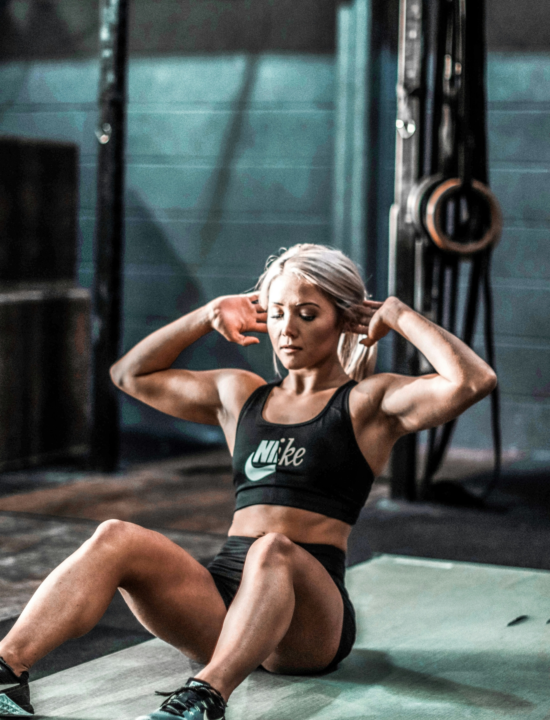
How many abs & core workouts should you do per week?
Finding the sweet spot for core training frequency depends on your goals, experience level, and overall training program. Like any muscle group, your core needs both stimulus and recovery to grow stronger.
The Minimum Effective Dose
For general fitness and health, training your core two to three times per week provides excellent results. This frequency allows sufficient recovery between sessions while providing enough stimulus for adaptation. If you're performing compound movements like squats and deadlifts regularly, you're already working your core indirectly. Two dedicated sessions targeting your abs and core muscles directly will round out this foundation nicely.
Moderate Volume for Most Goals
Most people thrive on three to four core sessions weekly. This could mean adding 10 to 15 minutes of core work to the end of three or four regular workouts. At this frequency, you can vary exercises and intensities throughout the week. Monday might feature heavy, low-rep movements like weighted cable crunches, while Wednesday focuses on endurance with longer plank holds, and Friday emphasizes rotation with medicine ball throws.
High Frequency for Advanced Goals
Athletes with specific core strength requirements might train their midsection five to six times per week. However, this doesn't mean crushing your abs with maximum intensity daily. High-frequency training requires intelligent programming with varying intensities and movement patterns. You might perform heavy anti-rotation work one day, light stability exercises the next, and high-rep burnout sets another day. This variety prevents overtraining while accumulating substantial weekly volume.
Quality Over Quantity
The number of sessions matters less than the quality of work performed. Three focused, well-executed core sessions beat seven sloppy, distracted ones every time. Each session should include 3 to 5 different exercises covering different movement patterns: anti-extension, anti-rotation, flexion, and lateral flexion. Aim for 2 to 4 sets per exercise, adjusting repetitions or time under tension based on the movement and your goals.
Recovery Considerations
Your core muscles recover faster than larger muscle groups like legs or back, but they still need rest. If you're sore or your form is deteriorating, that's your body requesting a break. Remember that heavy compound lifts also tax your core, so account for this indirect work when planning frequency.
Are ab exercises effective for fat loss and core stability?
This question touches on one of fitness's most persistent myths: spot reduction. Let's separate fact from fiction regarding what ab exercises can and cannot do for you.
The Fat Loss Reality
Here's the straightforward truth: ab exercises alone won't burn belly fat or reveal a six-pack. Spot reduction, the idea that exercising a specific body part burns fat from that area, is a myth thoroughly debunked by research. When you perform crunches or leg raises, you're strengthening the muscles beneath the fat layer, but you're not preferentially burning fat from your midsection.
Fat loss occurs systemically through a caloric deficit. You need to burn more calories than you consume, and your genetics largely determine where fat comes off first and last. For many people, unfortunately, the midsection is the final frontier. This doesn't mean ab exercises are worthless for fat loss, though. Building muscle anywhere in your body increases your metabolic rate slightly and certainly burns calories during the workout. However, the direct caloric burn from ab exercises is relatively modest compared to full-body movements or cardio.
The visible abs equation is simple in theory but challenging in practice: reduce body fat through proper nutrition and overall exercise while building the underlying muscle through targeted training. You need both components. All the crunches in the world won't reveal abs if they're hidden under excess body fat.
The Core Stability Benefits
Where ab exercises truly shine is building core stability, and this benefit cannot be overstated. Core stability refers to your midsection's ability to resist unwanted movement and transfer force efficiently between your upper and lower body. A stable core protects your spine during daily activities and athletic movements.
Strong core stability improves your performance in virtually every other exercise. Your squat numbers will increase when your core can maintain proper bracing. Your running economy improves when your torso doesn't twist excessively with each stride. Your lower back pain might decrease when your core properly supports your spine during prolonged sitting or standing.
Functional movements like picking up children, carrying groceries, or moving furniture all become safer and easier with enhanced core stability. The benefits extend far beyond aesthetics, touching every aspect of physical capability and injury prevention.
Targeted ab training also improves mind-muscle connection and control. Learning to properly brace your core and consciously engage these muscles translates to better performance during compound lifts and reduced injury risk. The proprioceptive awareness you develop through focused core work is invaluable.
What are the best abs & core workouts at home or with equipment?
You don't need a fancy gym membership to build a strong core, but equipment certainly expands your options. Let's explore effective strategies for both settings.
Effective Home Core Workouts
Bodyweight exercises provide excellent core training without any equipment. The beauty of these movements is their accessibility and scalability. Planks and their countless variations form the foundation of home core training. Standard planks, side planks, plank shoulder taps, and plank walks require nothing but floor space and determination.
Dead bugs and bird dogs are perfect for home workouts, teaching core control through simple but challenging movements. Bicycle crunches, mountain climbers, and flutter kicks effectively target different core muscles without equipment. The hollow body hold, borrowed from gymnastics, builds incredible core strength using only your body weight.
For added difficulty without equipment, slow down your tempo or add pauses at peak contraction. A three-second hold at the top of a crunch dramatically increases difficulty without needing weights. You can also increase volume, performing more sets or reps to ensure adequate stimulus.
Minimal Equipment Options
A single piece of affordable equipment dramatically expands home workout possibilities. Resistance bands enable exercises like Pallof presses and standing crunches with variable resistance. An ab wheel or exercise ball costs less than twenty dollars and provides unique training stimuli that bodyweight alone cannot match.
A pull-up bar opens up hanging leg raises and knee raises, which are exceptional lower ab builders. Many doorframe pull-up bars require no installation, making them perfect for apartments or rental homes. A medicine ball or single dumbbell allows weighted movements like Russian twists or weighted sit-ups.
Gym Equipment Advantages
Commercial gyms provide tools that take core training to another level. Cable machines offer constant tension throughout movements, making exercises like cable crunches and wood chops particularly effective. The adjustable resistance allows progressive overload, essential for continued strength gains.
Specialized equipment like captain's chairs for leg raises, decline benches for weighted sit-ups, and landmine attachments for anti-rotation work provide variety and challenge. However, remember that fancy equipment isn't necessary for results. The fundamentals work whether you're in your living room or a state-of-the-art facility.
What are good technique tips and variations for abs & core workouts?
Proper technique transforms mediocre core training into exceptional results while preventing injury. Small adjustments often make the difference between wasted effort and targeted muscle building.
Tip 1: Master the Brace
The most important technical skill for core training is learning to properly brace. This involves creating intra-abdominal pressure by taking a deep breath into your belly, tightening all your core muscles as if preparing for a punch, and maintaining this tension throughout the exercise. Proper bracing protects your spine while maximizing muscle engagement.
Many people mistakenly suck in their stomach during core exercises, which is exactly wrong. You want to expand your midsection slightly, creating that pressurized cylinder effect. Practice this breathing and bracing pattern before adding complex movements.
Tip 2: Control the Movement
Speed kills results in core training. Rushing through repetitions using momentum reduces muscle engagement and increases injury risk. Instead, move deliberately through each phase. Lower yourself slowly during crunches, hold planks with perfect stillness, and resist rotation during Pallof presses with complete control.
The eccentric or lowering phase deserves special attention. Taking three to four seconds to lower yourself during any core movement dramatically increases time under tension and effectiveness. This controlled tempo also provides immediate feedback about your true strength level.
Tip 3: Protect Your Neck and Lower Back
Two common technical errors plague core training: pulling on your neck during crunches and allowing your lower back to arch during leg raises. Both compromise results and risk injury.
During crunches or sit-ups, place your hands lightly behind your head for support, never pulling forward. Better yet, cross your arms over your chest or extend them forward. The movement should come from your abs contracting, not your arms yanking your head.
For leg raises and similar movements, maintain contact between your lower back and the floor or bench. If your back arches, you're going beyond your current core strength. Bend your knees, reduce the range of motion, or regress to an easier variation until you build sufficient strength.
Tip 4: Progressive Variations for Continued Growth
Your core adapts quickly to training stimuli, so progression is essential. You can progress any exercise through multiple methods. Add external resistance by holding weights or wearing a weighted vest. Increase range of motion by using a decline bench or extending further during rollouts. Add instability by performing exercises on an exercise ball or with one limb elevated.
You can also manipulate tempo, pauses, and isometric holds. A plank becomes significantly harder when you add a 10-second hold, relax for 2 seconds, then hold again for another 10 seconds. Combining variations, like performing a side plank while raising and lowering your top leg, challenges your core in new ways.
Tip 5: Exercise Selection and Programming
Include exercises from different categories in each session: one stability exercise like planks, one anti-rotation movement like Pallof presses, one flexion exercise like crunches, and one dynamic movement like mountain climbers. This comprehensive approach ensures balanced development.
Beginners should master bodyweight variations before adding resistance. Once you can perform three sets of 15 to 20 controlled repetitions or hold positions for 45 to 60 seconds, progress to more challenging variations or add external resistance.
Built for progress
Take the guesswork out of training
Create personalized AI-powered workout plans that evolve with you. Train smarter, track every rep and keep moving forward, one workout at a time.





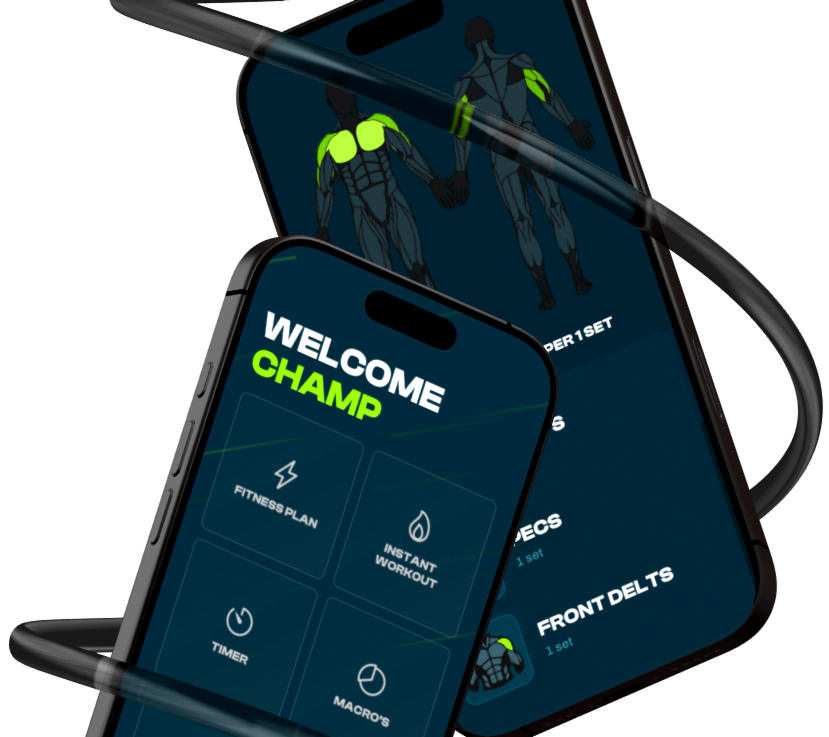
A proven system for training smarter, not harder
Conclusion: Building your strongest core
A strong core foundation supports every aspect of your fitness journey and daily life. Throughout this guide, we've explored how effective core training requires more than mindless crunches. Understanding your core anatomy, selecting appropriate exercises, and applying proper technique determines whether you build genuine strength or simply go through the motions.
The best abs and core workouts incorporate variety, targeting all the muscles in your midsection through different movement patterns. Whether you train at home with minimal equipment or in a fully equipped gym, countless options exist for building core strength. The key is consistency and progressive overload, gradually increasing difficulty as your strength improves.
Remember that visible abs require both muscle development and fat loss through proper nutrition. Core exercises excel at building stability, strength, and function, but they cannot spot-reduce belly fat. Combine targeted core training with full-body strength work and appropriate nutrition for comprehensive results.
You can effectively integrate core work into your existing training split, finishing regular workouts with focused ab exercises or dedicating separate sessions to midsection development. Most people achieve excellent results training their core three to four times weekly with proper intensity and recovery.
Focus on quality over quantity. Perfect technique, controlled movements, and appropriate exercise selection matter far more than endless repetitions of poorly executed crunches. Protect your neck and lower back, master the brace, and progress methodically through increasingly challenging variations.
Your core is truly the center of your physical capabilities. Invest the time to build it properly, and you'll see improvements in strength, performance, injury resilience, and yes, eventually, those visible abs that motivated you to read this guide in the first place.
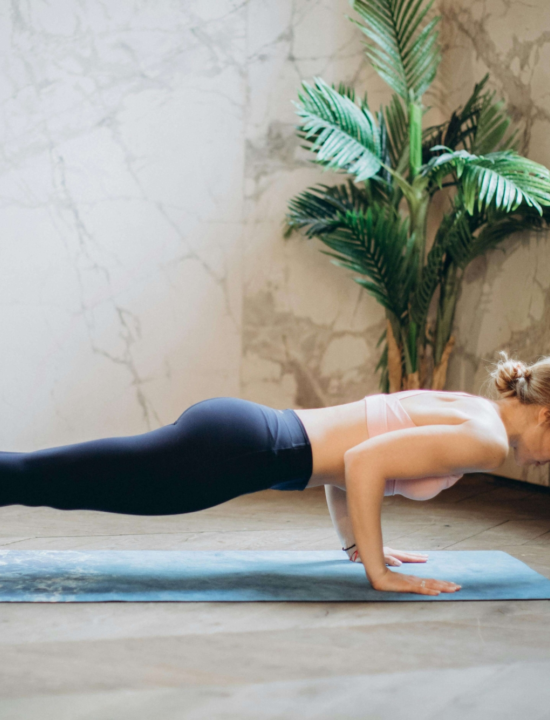
Frequently Asked Questions about abs & core workouts
Your abs, specifically the rectus abdominis or (six-pack) muscle, are just one component of your core. The core encompasses all the muscles that stabilize and move your trunk, including your rectus abdominis, internal and external obliques, transverse abdominis, erector spinae, multifidus, and even your hip flexors, glutes, and pelvic floor muscles. Essentially, your core is everything between your shoulders and hips, front to back. Effective training addresses this entire system rather than focusing exclusively on the front abs. This comprehensive approach builds true functional strength and stability rather than just superficial muscle development. Think of abs as a subset of the larger core system.
Planks are exceptional for building core stability and endurance, but relying solely on them won't optimally develop visible abs. While planks engage your entire core, they're primarily an isometric anti-extension exercise. Comprehensive core development requires variety, including flexion movements like crunches, rotation exercises like Russian twists, and dynamic movements. Additionally, visible abs depend more on body fat percentage than any single exercise. You could have incredibly strong abs from planks but never see them if they're covered by excess body fat. Include planks as a foundation in your core routine, but supplement them with other movement patterns and address nutrition for visible results.
For most people, training abs after your main workout is ideal. Your core stabilizes your body during compound exercises like squats, deadlifts, and overhead presses. Fatiguing it beforehand can compromise your form and strength during these demanding movements, potentially causing injury. However, a brief core activation routine before training can be beneficial as part of your warm-up. Light planks or dead bugs for one or two sets prime these muscles without causing fatigue. Some advanced athletes occasionally prioritize abs by training them first when specifically focusing on core development, but this should be the exception rather than the rule for general fitness enthusiasts.
You'll typically feel strength improvements within two to three weeks of consistent core training, as neuromuscular adaptations occur quickly. However, visible changes take longer. Most people notice improved definition after six to eight weeks of regular training combined with proper nutrition. Seeing fully defined abs depends heavily on your starting body fat percentage. Someone at 20% body fat will need several months of fat loss before abs become visible, while someone at 15% might see definition within a few weeks. Remember that consistency with both training and nutrition determines your timeline far more than any specific exercise selection.
Technically yes, but it's not necessary for most people and may actually hinder progress. Your core muscles, while recovering faster than larger muscle groups, still need rest to repair and strengthen. Training abs every day works only if you vary intensity and exercise selection dramatically, preventing overtraining. Most people achieve better results training core three to four times weekly with higher intensity than seven times weekly with compromised effort. Daily light core activation through exercises like brief plank holds can complement your regular training without overtaxing these muscles. Listen to your body and prioritize quality sessions over excessive frequency.
Explore more training options
Related abs & core workouts1
Get inspired and motivated

